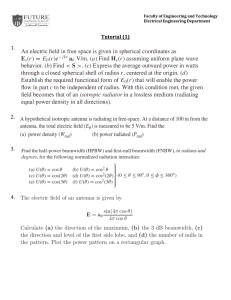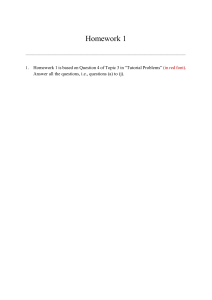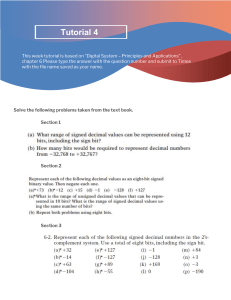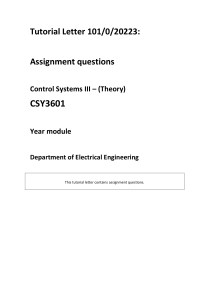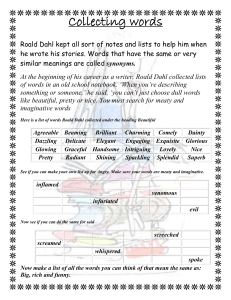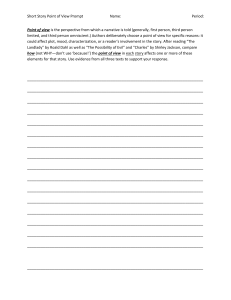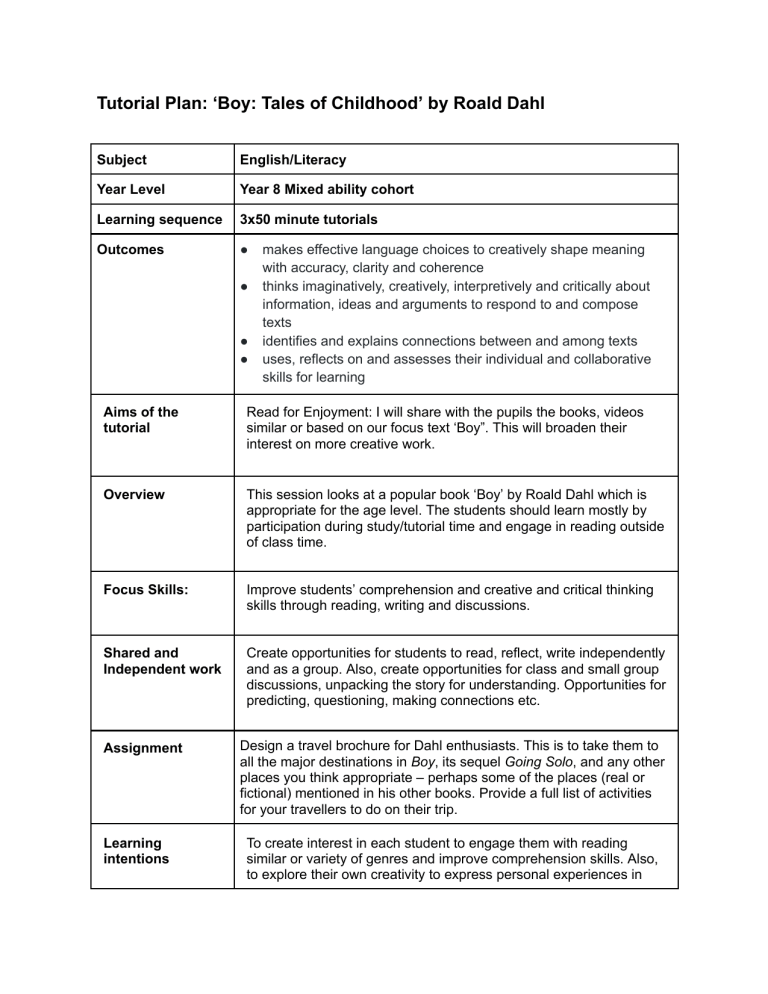
Tutorial Plan: ‘Boy: Tales of Childhood’ by Roald Dahl Subject English/Literacy Year Level Year 8 Mixed ability cohort Learning sequence 3x50 minute tutorials Outcomes ● ● ● ● makes effective language choices to creatively shape meaning with accuracy, clarity and coherence thinks imaginatively, creatively, interpretively and critically about information, ideas and arguments to respond to and compose texts identifies and explains connections between and among texts uses, reflects on and assesses their individual and collaborative skills for learning Aims of the tutorial Read for Enjoyment: I will share with the pupils the books, videos similar or based on our focus text ‘Boy”. This will broaden their interest on more creative work. Overview This session looks at a popular book ‘Boy’ by Roald Dahl which is appropriate for the age level. The students should learn mostly by participation during study/tutorial time and engage in reading outside of class time. Focus Skills: Improve students’ comprehension and creative and critical thinking skills through reading, writing and discussions. Shared and Independent work Create opportunities for students to read, reflect, write independently and as a group. Also, create opportunities for class and small group discussions, unpacking the story for understanding. Opportunities for predicting, questioning, making connections etc. Assignment Learning intentions Design a travel brochure for Dahl enthusiasts. This is to take them to all the major destinations in Boy, its sequel Going Solo, and any other places you think appropriate – perhaps some of the places (real or fictional) mentioned in his other books. Provide a full list of activities for your travellers to do on their trip. To create interest in each student to engage them with reading similar or variety of genres and improve comprehension skills. Also, to explore their own creativity to express personal experiences in written form. Success Criteria All students will complete reading the text, participate in small group discussions, take notes. Most students will complete reading the text independently, participate in class and small group discussions, complete all written tasks. Some actively and independently participate in all reading, speaking and writing activities, questioning and using sophisticated vocabulary. Also complete all the extension task. Teaching and Learning Opportunities Before Prep session: I will conduct for a preparatory tutorial session one week before the real tutorial so as to make the whole class take interest in reading the text ‘Boy’ and to come prepared. I will distribute illustrations of the cover and from the text of the book to refer to them in the actual tutorial. Pre-Reading Stage-in which to familiarise students with the text and illustrations appearing in the book and provoke their thinking. Introduce the tutorial subject and it’s aim. During Model Explicitly teach how to apply the particular comprehension skill (predicting, monitoring, summarising, making connections, visualsing, questioning) Unpack any unfamiliar words throughout the unit. Encourage students to use sophisticated vocabulary in their written responses. I will guide the students through reading the text, motivating and bringing their attention to the illustrations. How pictures tell the story. Encourage students find similar instances in their own lives (making connections). I will encourage them to learn through practice of new skills. Students will be encouraged to do activities independently as well as collectively in small groups. I will observe their learning, provide feedback to facilitate their progress. I will mostly carry out the tutorial by learning through “real life” situations rather than theoretically. Whole Class: 1. First draw the attention of all students to pay attention and participate in understanding the book, ‘Boy’ by Roald Dahl. Discuss concept of Biography, autobiography, coming of age story concepts by eliciting responses from pupils. 2. Ask the whole class what the book is about? If they had similar experiences as the author has described in the book. Now the class is to be divided into four groups Group Work: 1. Ask group 1 to come to the front. Their job is to take notes and discuss the story among themselves and come up with ideas of biography and autobiography. 2. Group 2 will take notes and discuss and present characters which they found interesting. 3. Group 3 will take notes and speak about the places described in the book such as Wales, Norway. 4. Group 4 will take notes and speak about the school scene. They should try to highlight things in the author’s life as a student that they liked or disliked. In all the groups one pupil will do the job of a scribe and write down new words or ideas. I will support scribing for the students with lower ability. Whole Class: Following the group work, the class will merge and the students will be asked to write 10 to 15 lines on the content of the book in their own words. Assessment Teacher observation, student written and oral responses. Differentiation Tutorial for pupils of low or special abilities: I will ● Create their interest in stories by playing some of the videos based on writing by Roald Dahl for children, namely The Witches, Willy Wonka and the Chocolate Factory, Matilda which is also a musical. The themes of these videos are similar to what Dahl writes in “Boy” and hence relate to the pupil well. ● have them read the text aloud and pay special attention to the ones who are slow in uninterested in the reading. I will also resort to re-reading for the pupils to gain fluency and smoothness. This repeated reading will help slow learners decode the word meanings better. ● encourage talk with me and their peers to develop more interest in the activity. This "verbal processing" helps them remember and think through the themes of the book. I will ask questions before, during, and after the session to encourage reading comprehension. The questions will be on names of characters, location, why something happened, did any similar happen to the ● ● ● ● Resources: Evaluation pupils themselves etc. use context clues. Using context clues will help pupils understand what they are reading even if they don’t know all the vocabulary being used. ask them to write summary of the text they read. eliminate distractions as much as possible encouraging students with lower or special ability to read e-books or audiobooks to develop their reading skills. Also use talk-to- text to support their note taking. ‘Boy’ by Roald Dahl - hard copy, e-Book, audio book Vidos PPP Images
